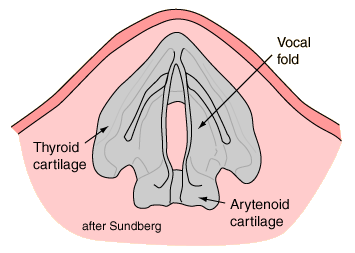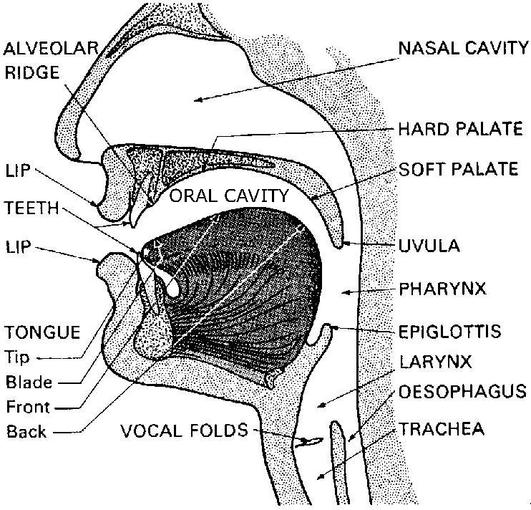A Quick Primer on the Mechanics of Speech
When you use Speech Buddies, your child learns the correct positioning of the tongue for each sound. It provides tactile feedback to improve articulation. But how much do you really know about the mechanics of speech? Sure, the lungs expel air, the tongue moves, and there’s also a larynx in there somewhere, but there’s a lot more to speech production than you might realize. Here’s a quick primer in the production of speech and the parts of the body involved in the process.
Sound Production
The most basic principle of speech production is that all sounds are produced by moving air. Air moves from the lungs to the mouth via the throat. The vocal folds (or vocal cords) vibrate as needed. (More on this below.) And then the articulators (mouth, lips, tongue, cheek, palate, etc.) shape specific sounds.
Trachea
The trachea is also called the windpipe. It’s a tube that allows air to pass from the lungs to the larynx. It has “rings” made up of cartilage that protect the airway.
Larynx and Vocal Folds
You’ve probably heard the larynx referred to as the voice box. It’s very important for the production of speech. The vocal folds are part of the larynx. They are folds of muscular tissue that a person can close and open to varying degrees. When we pronounce voiceless sounds like an “s,” we narrow the vocal folds so that the air passing through them makes a rushing sound. Closing the vocal folds further causes them to touch each other lightly, creating a vibration as the air passes through. A good example of this is a “z” sound. Try making an “ssss” sound, then try making the “zzzz” sound to feel the difference.
If we close the vocal folds completely, air cannot pass through. This is called a glottal stop. Many languages utilize the glottal stop to produce consonant sounds.
Pharynx
The pharynx is above the larynx, but below the uvula. It is a passage way that can carry both air and food. It is part of the vocal tract. As the vocal folds release puffs of air, these sound waves.
Nasal and Oral Cavities
The nasal cavity is the space above and behind the nose. It can be used to produce nasal sounds like “m” and “n.” Raising the soft palate, also called the velum, blocks air from entering the nasal cavity. The oral cavity, or mouth, also manipulates the formation of sounds.
The Articulators
The articulators (the mouth is included in this category) are essential for forming individual sounds. Articulators include the hard palate (the roof of the mouth), the soft palate (the muscular structure that is attached to the hard palate), the mandible or jaw, the teeth, the tongue, the lips, and the cheeks.
Types of Sounds
Moving the oral structures in certain ways produces different sounds. For example, bilabial sounds are created when the lips press together. For example, say “Bob” and “pop.” Notice how your lips scrunch together to produce the “b” and “p” sounds. Labiodental sounds occur when the lower lip touches the upper teeth, as in the “f” in “fit.” Dental sounds occur when the tip of the tongue touches the upper teeth, as in the “th” in “thin.” There are several other different types of sounds. If your child is having trouble with articulation, talk to his speech-language pathologist (SLP) about the specific sounds that he needs to work on.





